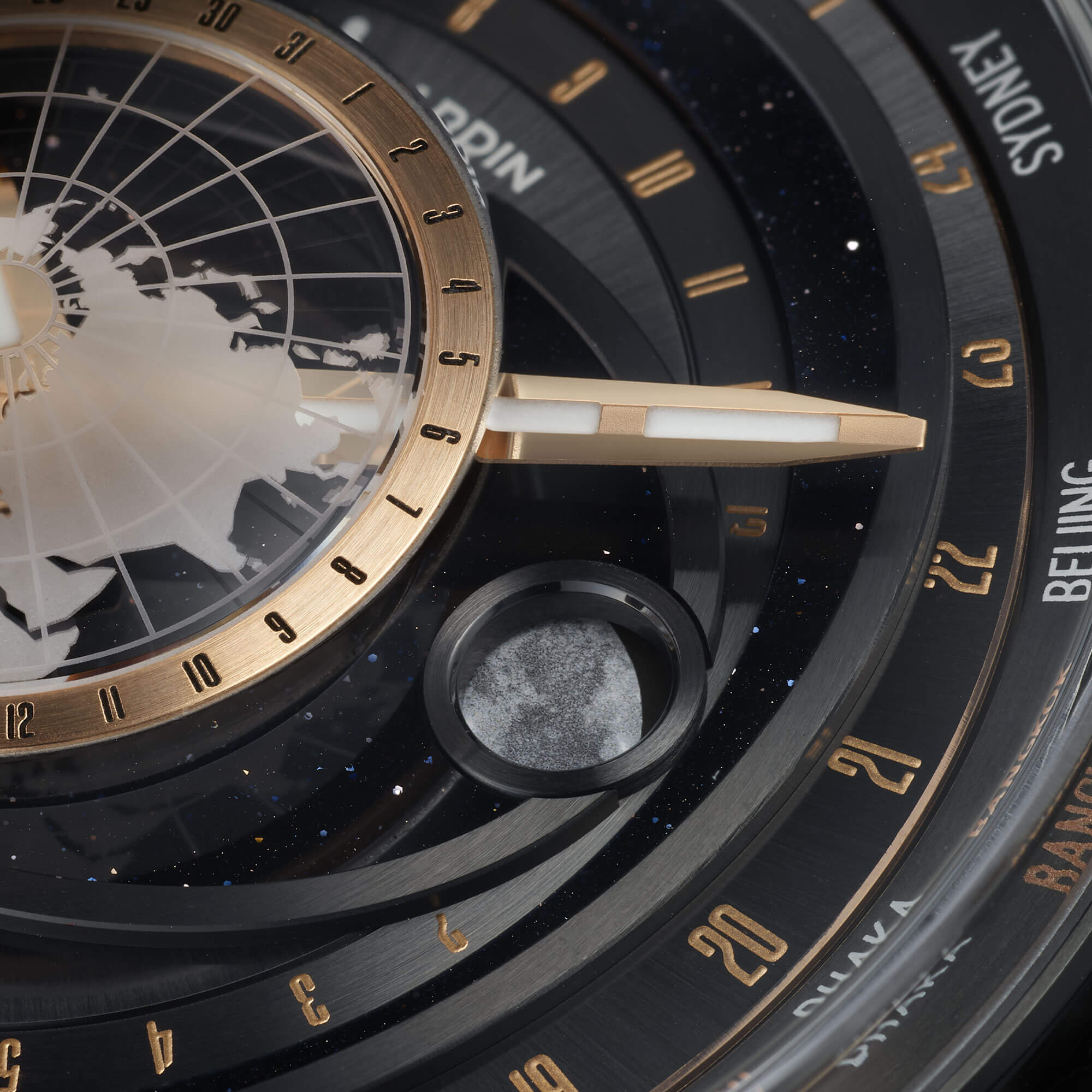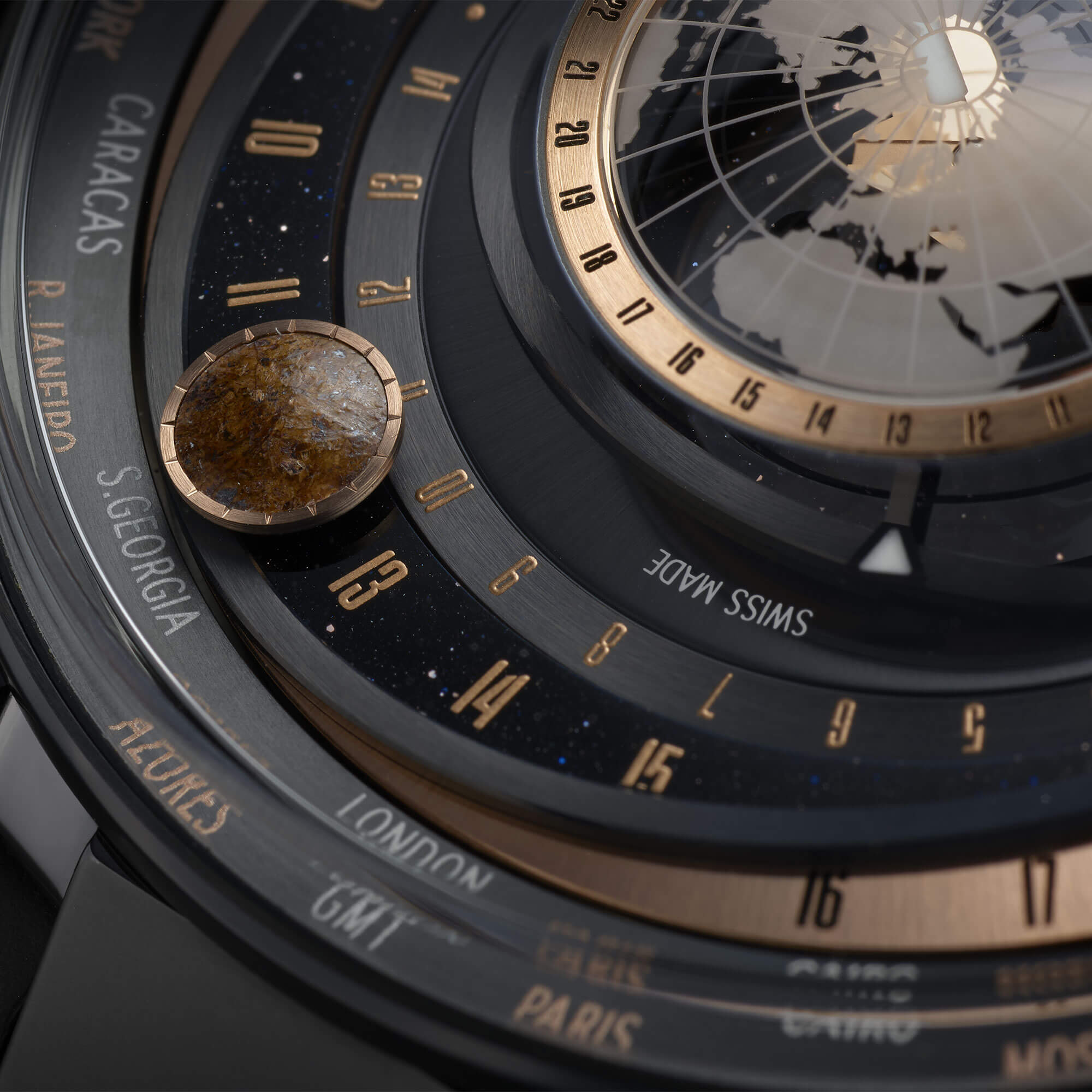Luxury watchmaker Ulysses Nardin unveils 'Blast Moonstruck' watch that charts moon phases
You can keep track of the moon's behavior on your wrist.

A new luxury watch closely tracks the phases of the moon in an elegant format — and comes with a hefty price tag.
On Feb. 1, the Swiss luxury watchmaking company Ulysse Nardin launched a new wristwatch called "Blast Moonstruck," which aims to show how the moon, the sun and other celestial movements appear from the Earth's perspective. It has a limited-edition run, so if you're willing to spend $79,100 on this watch, the company urges you to buy soon.
Besides moon phases, the watch also tracks the moon's rotation, the (apparent) movement of the sun around the Earth, and the tides. The wristwatch glance at celestial movements is perfect for beginning astronomers, the company says.
Related: Omega debuts next generation of NASA-qualified Speedmaster moonwatches
"I am delighted that my watches and astronomical clocks enable people to think about their position in the universe, and perhaps realize that we are not the center of the world," watchmaker Ludwig Oechslin said in a company statement.
Oeschlin is known for producing a series of astronomical wristwatches in the 1980s for the luxury market. This new watch is distinctive from older watches with its focus on having readouts understandable by non-specialists, the company says.
The 45-millimeter watch features a black ceramic and black titanium finish, with options of alligator skin, velvet or rubber straps in black to complement the display.
Get the Space.com Newsletter
Breaking space news, the latest updates on rocket launches, skywatching events and more!


The moon phase indicator, which is the heart of the watch, makes a complete rotation every 29 days, 12 hours, 41 minutes and 9.3 seconds in line with the duration of the moon's orbit with respect to the line joining the sun and the Earth. (This is also called a "lunation.")
Moonwatchers will also enjoy seeing exactly where both the sun and the moon are located above the Earth, from our perspective. This will especially be important during eclipses of the sun and the moon, which happen during celestial alignments of those two worlds with the Earth.
But if you're like most of us and need to find moon phases in a more affordable format, you can consult Space.com's moon phase calendar and our monthly discussions of the full moon, like February's Snow Moon.
Follow Elizabeth Howell on Twitter @howellspace. Follow us on Twitter @Spacedotcom or Facebook.
Join our Space Forums to keep talking space on the latest missions, night sky and more! And if you have a news tip, correction or comment, let us know at: community@space.com.

Elizabeth Howell (she/her), Ph.D., was a staff writer in the spaceflight channel between 2022 and 2024 specializing in Canadian space news. She was contributing writer for Space.com for 10 years from 2012 to 2024. Elizabeth's reporting includes multiple exclusives with the White House, leading world coverage about a lost-and-found space tomato on the International Space Station, witnessing five human spaceflight launches on two continents, flying parabolic, working inside a spacesuit, and participating in a simulated Mars mission. Her latest book, "Why Am I Taller?" (ECW Press, 2022) is co-written with astronaut Dave Williams.









